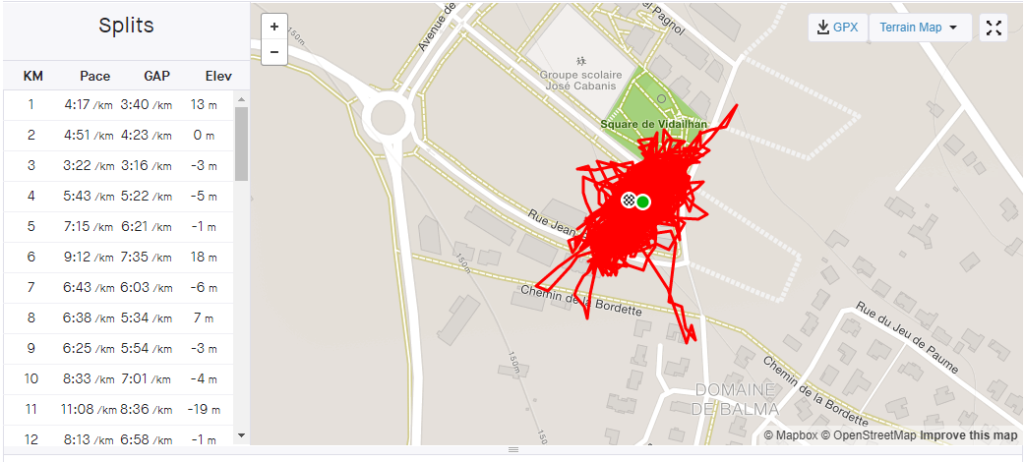
When I saw this screen capture by the man who ran a full marathon in his balcony during COVID-19 I was reminded about how easy it is for us humans to confuse movement with progress.
It made me think about the times, during the past 20 years as an entrepreneur and product person when I found myself leading teams and products “nowhere”. It sucks to admit it but looking back at those years I know that at least in a couple of companies the course we took wasn’t so different than that 42.2k balcony marathon. We gave it all, we run really hard and fast but we reached nowhere. We ended up exactly where we started!
Here are a few lessons I learned along the way that led me to believe that VISION is the most important pillar for any person or team who wants to create true velocity that enables them to unlock their full potential and maximize their progress and impact.
Lesson 1: Speed isn’t velocity
You can run 1 mile forward then turn and run that same 1 mile back… you might gain speed but nevertheless you will gain zero velocity! Why?
Speed is the rate at which an object covers distance.
Velocity is the rate at which an object changes its position.
in other words…
Speed answers: How much distance did we cover in a given time?
Velocity answers: How much did we progress in a given time?
And this tiny difference makes all the difference in the world.
Lesson 2: Speed can create a sense of “fake progress”
When our engineering teams measure the number of story points they completed in a given sprint we call it “velocity” when in fact what we are measuring is speed.
measuring speed isn’t a flawed practice but for the fact that humans are built in a way that makes us confuse movement with progress (and speed with velocity).
This human “design bug” means that after a while the sense of speed, by itself, is enough for us to create a sense of accomplishment. Moving an item from the “in progress” column to the “Done” column sends a boost of Dopamine and with it the sense of fake progress.

Lesson 3: Without goals there is no velocity
So how do we measure our velocity? We measure progress/time!
To do that we need to answer one basic question which an incredibly alarming percent of teams in the world can’t answer: Where are we going?
In other words, we need a goal that is measurable if we are to measure progress over time.
This means that without measurable goals there is no velocity!
Lesson 4: “Fake goals” create “fake velocity”
This is the most important lesson but also the one I find the hardest to pass on… But I will keep on trying because it has changed my life.
Remember that fake sense of progress humans derive from simply completing tasks? Well, this mechanism also impacts our “goal” setting process. It means that we sometimes define the completion of a project/task (e,g, “release version 2.0”) as our goal instead of focusing on the impact/value our project is supposed to deliver (e.g. “Our goal for version 2.0 is to increase retention by 50%”)
Fake goals are goals that measure our speed and not our progress/velocity.
Delivery is never the goal!
- Where are we going?
- How will this project progress us towards our destination?
Without these two answers we can’t measure progress, and without progress there is no velocity just speed.
This is where vision comes in handy…
Lesson 5: vision helps ensure our goals drive our value
So how do we ensure our goals drive the value we want to deliver? How can we avoid sending our teams to work on “fake goals” that get them nowhere?
The answer is VISION.
Why?
Because, done right, vision is an image of a future reality where we were able to deliver our value to the world.
This means that as long as our vision informs our goal-setting process we ensure that our goals will drive the value we want to deliver.
Think of it this way. We’re trying to put together a huge 1 million pieces puzzle. It will take us 10–20 years to complete. Our vision is the final image on the puzzle box. Each of our goals is a section of that puzzle we are trying to put together.

Lesson 6: Done isn’t done
We need to redefine our definition of “done” 🙂 Because done is not done.
It is only when our efforts delivered the intended value behind our work that we can consider our work done.
Then and only then can we say that we are progressing, that we have achieved velocity.
